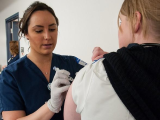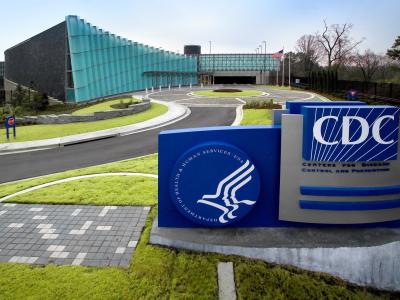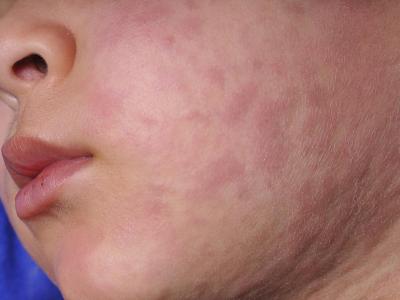This week, our systematic review of COVID-19, respiratory syncytial virus (RSV), and influenza immunizations was published in the New England Journal of Medicine. We analyzed 511 studies to provide evidence-based guidance for the upcoming 2025-26 respiratory virus season, work that feels especially urgent as federal vaccine advisory processes face unprecedented disruption.
Clinicians, public health officials, and patients need independent evidence synthesis more than ever. Our review provides extensive data on both the effectiveness and safety for protection against all three respiratory viruses, though interpreting these numbers requires understanding the distinct context surrounding each.
Three viruses, 3 measurement realities
The effectiveness percentages we report tell different stories, depending on which virus we're addressing.
COVID vaccines operate in populations with complex pre-existing immunity from prior vaccination and infection. RSV immunizations work in adults who are infection-experienced—have had a previous infection—but vaccine-naive, meaning they've never had this specific vaccine. Influenza vaccines face the moving target of annual strain variation.
These fundamental differences shape how we should interpret the data.
COVID vaccines: Adding protection to existing immunity
When we report that COVID-19 vaccines are 46% to 50% effective against hospitalization (IVY/VISION networks, 2024-25), understanding what this means requires recognizing that we're measuring additional protection on top of broad background immunity, not protection from a blank slate.
The "unvaccinated" comparison groups in current studies represent a spectrum: some never vaccinated, others who received earlier vaccines but skipped recent updates. Most important, nearly everyone has encountered SARS-CoV-2 by now, conferring natural immunity of varying degrees.
The Veterans Affairs (VA) study in the VA health system illuminates this complexity. When researchers evaluated the KP.2 vaccine in fall 2024, they found 68% effectiveness against hospitalization, a substantial rebound from the 32% seen during JN.1 dominance with the prior formulation. This represents additional protection layered onto existing immunity, demonstrating how matching vaccines to circulating strains optimizes benefit even in previously vaccinated populations.
For immunocompromised adults, we found 37% effectiveness against hospitalization. While some might view this as low to modest, for patients whose immune systems struggle to mount robust responses, reducing hospitalization risk by more than a third represents clinically significant protection.
Reducing hospitalization risk by more than a third represents clinically significant protection.
Effectiveness varied with viral evolution: higher during XBB dominance, lower with JN.1, and rebounding in early KP.2-era data when vaccine-variant match improved. This pattern mirrors what we've long accepted with influenza, that matching vaccines to circulating strains optimizes protection.
RSV: Strong protection in vulnerable populations
RSV immunizations demonstrated 75% to 80% effectiveness against hospitalization in adults 60 and older. These higher numbers reflect a different comparison: immunized versus immunization-naive adults who, while previously exposed to RSV infections, had never received a product to protect against RSV. These estimates capture closer to absolute protection than COVID's incremental gains.
For infants, two breakthrough prevention strategies emerged. Maternal immunization with the RSVpreF (Abrysvo) vaccine achieved 68% effectiveness against infant hospitalization through antibody transfer. Nirsevimab, a long-acting monoclonal antibody, showed roughly 80% to 85% effectiveness against hospitalization and intensive care unit admission in early real-world studies.
These advances transformed RSV prevention.
These advances transformed RSV prevention. Before 2023, we lacked effective universal tools against this virus that hospitalizes 60,000 to 160,000 older adults and countless infants annually. Now we have interventions that work.
Flu vaccines: Variable but valuable protection
Influenza vaccines in our review showed pooled effectiveness of 67% against hospitalization in children, 48% in working-age adults, and 42% to 53% in older adults.
Year-to-year effectiveness fluctuates based on how well vaccines match circulating strains, ranging from 20% to 30% in poor-match years to over 60% when the match is good. Despite this variability, enhanced formulations for older adults consistently outperformed standard doses, supporting their preferential use.
Safety: What extensive surveillance shows
Our safety analysis encompassed hundreds of studies tracking millions of vaccine recipients. The findings prove reassuring.
For COVID vaccines across five years of surveillance, myocarditis after mRNA vaccination remains rare, concentrated in adolescent and young adult males, with rates far below the peaks observed in 2021. Large analyses of XBB.1.5 vaccines identified no new or higher myocarditis risks. And it's crucial to note that myocarditis risk after COVID infection exceeds post-vaccine risk.
Pregnancy safety data from seven large observational studies in our review found no increased risk of miscarriage or stillbirth with COVID vaccination. Several studies demonstrated protective associations: lower rates of preterm birth and low birthweight among vaccinated mothers.
For RSV vaccines, our review relied on Fry et al, which found 18.2 excess cases of Guillain-Barre syndrome (GBS, a nerve disorder) per million doses for RSVpreF but no statistically significant association for RSVPreF3-AS01 (Arexvy).
Given RSV's hospitalization and mortality burden in older adults (60,000 to 160,000 hospitalizations annually), the benefit-risk balance remains strongly favorable.
Subsequent analysis by the Food and Drug Administration (FDA), however, estimated approximately 9 excess cases per million doses for RSVpreF and 7 per million for RSVPreF3-AS01. The FDA added GBS warnings to both vaccines' labels in January 2025, and the Advisory Committee on Immunization Practices currently considers the GBS risk similar between the two vaccines. Given RSV's hospitalization and mortality burden in older adults (60,000 to 160,000 hospitalizations annually), the benefit-risk balance remains strongly favorable.
Initial preterm birth concerns from maternal RSV vaccination have not been observed in real-world studies when vaccination occurs at 32 to 36 weeks or pregnancy, the recommended window.
Understanding what protection means today
The critical question for doctors and their patients hinges on what additional protection each immunization provides specific people. A healthy 30-year-old with robust COVID immunity from vaccination and infection faces vastly different risk-benefit calculations than a 75-year-old confronting RSV.
COVID vaccine effectiveness represents incremental benefit added to complex baseline immunity. RSV immunization effectiveness captures near-absolute protection in vaccine-naive adults. Influenza vaccine effectiveness reflects variable but meaningful protection against an ever-changing target.
Despite these differences, all three immunizations substantially reduce severe disease, the outcome that matters most.
Evidence endures when institutions falter
Our systematic review shows that rigorous, transparent evidence synthesis can persist even when traditional advisory processes falter. All data are publicly available through an interactive web application to promote transparency and trust.
The landscape of immunity has changed dramatically since 2020. Our tools for measuring and understanding vaccine impact must evolve accordingly. COVID vaccine effectiveness now measures incremental benefit in a population with widespread immunity. RSV immunization provides substantial protection in vaccine-naive older adults at genuine risk. Influenza vaccines continue their decades-long pattern of moderate but meaningful protection.
In an era of disrupted federal guidance, this independent synthesis provides the evidence foundation needed to navigate the 2025-26 respiratory season. The numbers tell different stories for different vaccines in different populations. Our task is to ensure those stories are understood accurately, helping people make informed decisions based on their individual circumstances.
In an era of disrupted federal guidance, this independent synthesis provides the evidence foundation needed to navigate the 2025-26 respiratory season.
I'm grateful to my co-authors for their dedication to this enormous undertaking, and to the editors at the New England Journal of Medicine who recognized the urgency of this work and shepherded it through publication with exceptional efficiency and care.
Dr. Scott is an infectious diseases physician and clinical associate professor at Stanford University School of Medicine. He was a co-author on the NEJM systematic review discussed in this piece.
The opinions voiced in CIDRAP Op-Ed pieces are the authors' own and do not necessarily represent the official position of CIDRAP.





















